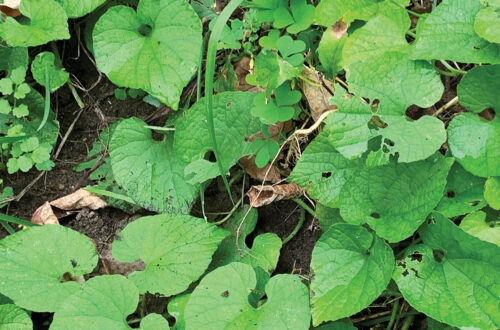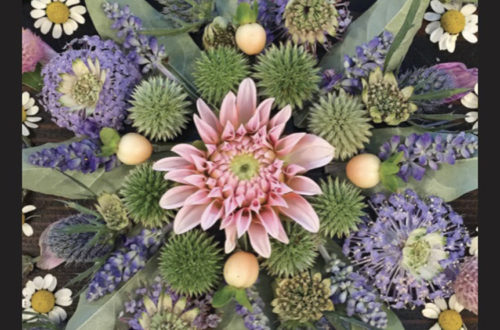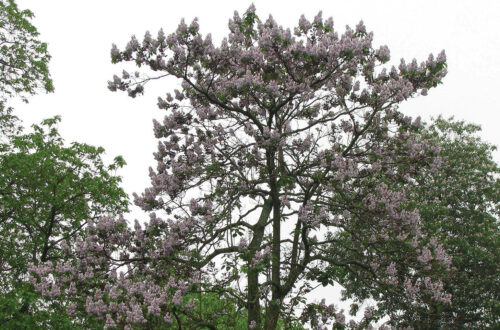Quackgrass (Elymus repens) was added to Connecticut’s official list of invasive plants on Oct. 1, 2024. It has many common names: Medusa’s head, Devil’s grass, witch grass, quick grass, couch grass, twitch, quitch, scratch grass, quake grass, shelly grass, knotgrass, scutch, pond grass, false wheat and creeping wheat.
It’s native to Europe and Western Asia. It is thought to have come here with colonists around 1672 and then spread westward in hay bales. It used to be planted as a forage crop.
It’s a long-lived perennial, cool-season running grass with creeping rhizomes. The rhizomes typically grow a foot or two before sending out stems and may grow as deep as 8 inches.
The U.S. Forest Service says, “Quackgrass invades gardens, yards, crop fields, roadsides, ditches, and just about any disturbed, moist area.” They also add, “It invades mixed-grass prairies as well as oak (Quercus spp.)-hickory (Carya spp.) and whitebark pine (Pinus albicaulis) forests.”
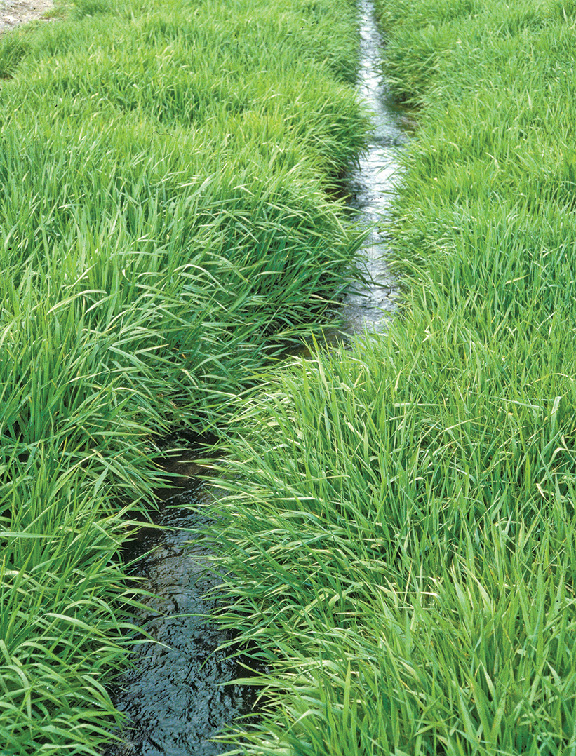
Quackgrass can reach 4 feet tall and up to 2 feet wide. It grows pretty much anywhere except in deep shade. Its sod mats can be quite dense. The Province of Ontario says, “It is often considered one of the three most serious weeds because it infests 37 different crops in 65 countries.”
GoBotany (gobotany.nativeplanttrust.org) calls it creeping wild rye and says it’s “present throughout New England in fields and anthropogenically disturbed sites, but also sometimes in natural habitats such as cobble river shores.”
Reproduction
Quackgrass spreads via creeping rhizomes and seeds. Seeds can remain viable for up to six years, even after passing through the digestive system of most farm animals. Rhizomes can spread up to 24 inches horizontally and extend up to 8 inches into the soil.
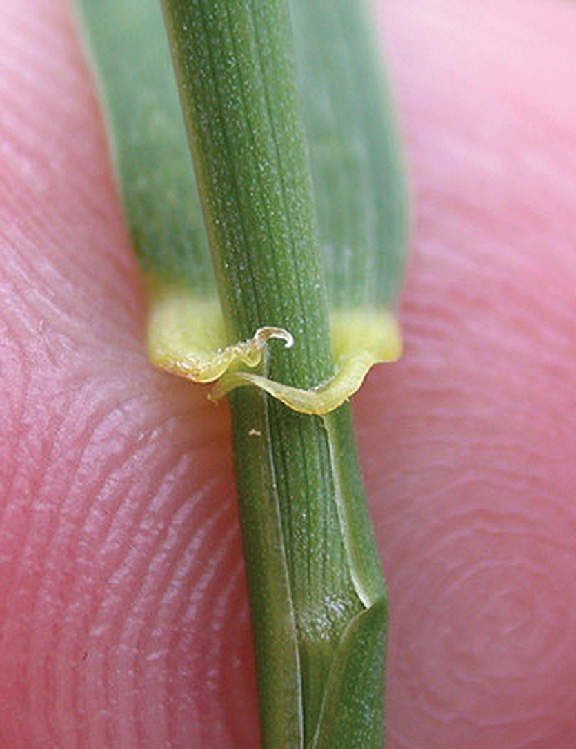
The clasping auricles of Quackgrass (Elymus repens) are a key identifier.
Identification
Quackgrass leaves range from green to pale yellow. The flat blades are 1/8 to 3/8 inch wide, 3-12 inches long and arranged alternately. They’re somewhat hairy on top and smooth underneath. The stems are hollow and flower spikes are 2-8 inch with 3-8 florets per spike. It flowers from May to September.
A key identifying factor is the clasping auricles where the blade and sheath meet. (See photos.) The auricles may be difficult to see on young seedlings.
Tall fescue and ryegrasses look similar to Quackgrass but lack the extensive rhizomes and grow in clumps.
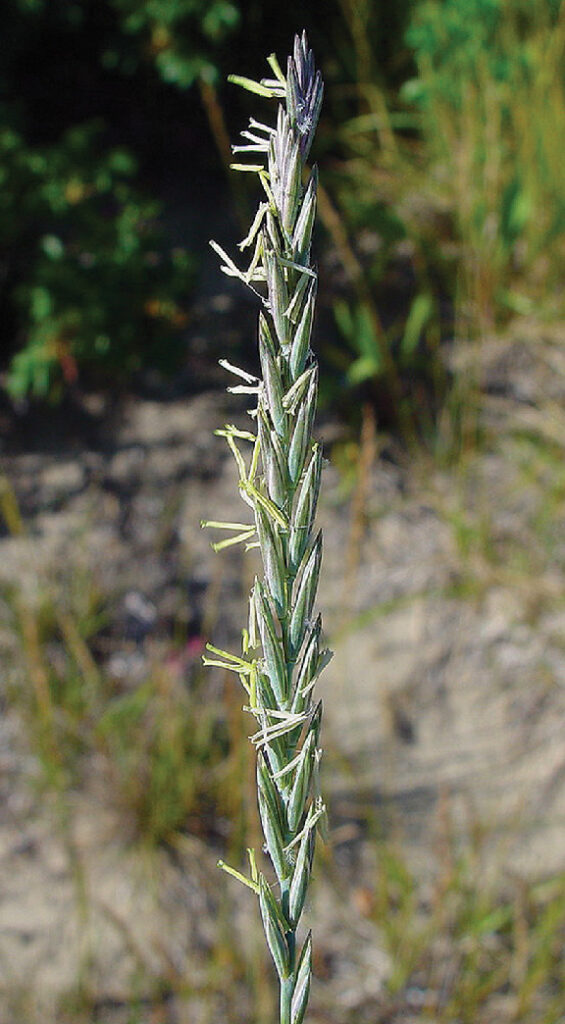
The Problem
It’s a quick grower that monopolizes soil nutrients and water and crowds out native species and crops. The rhizomes also release allelopathic chemicals that inhibit the growth of other plants.
Control
If you dig it out, try to get every-thing as fragments left behind will grow. The process may take a couple of years. Some people recommend covering the area with woodchips and cardboard. An integrated approach or an herbicide such as glyphosate is often recommended. For more info check cipwg.uconn.edu
– Compiled by Will Rowlands


